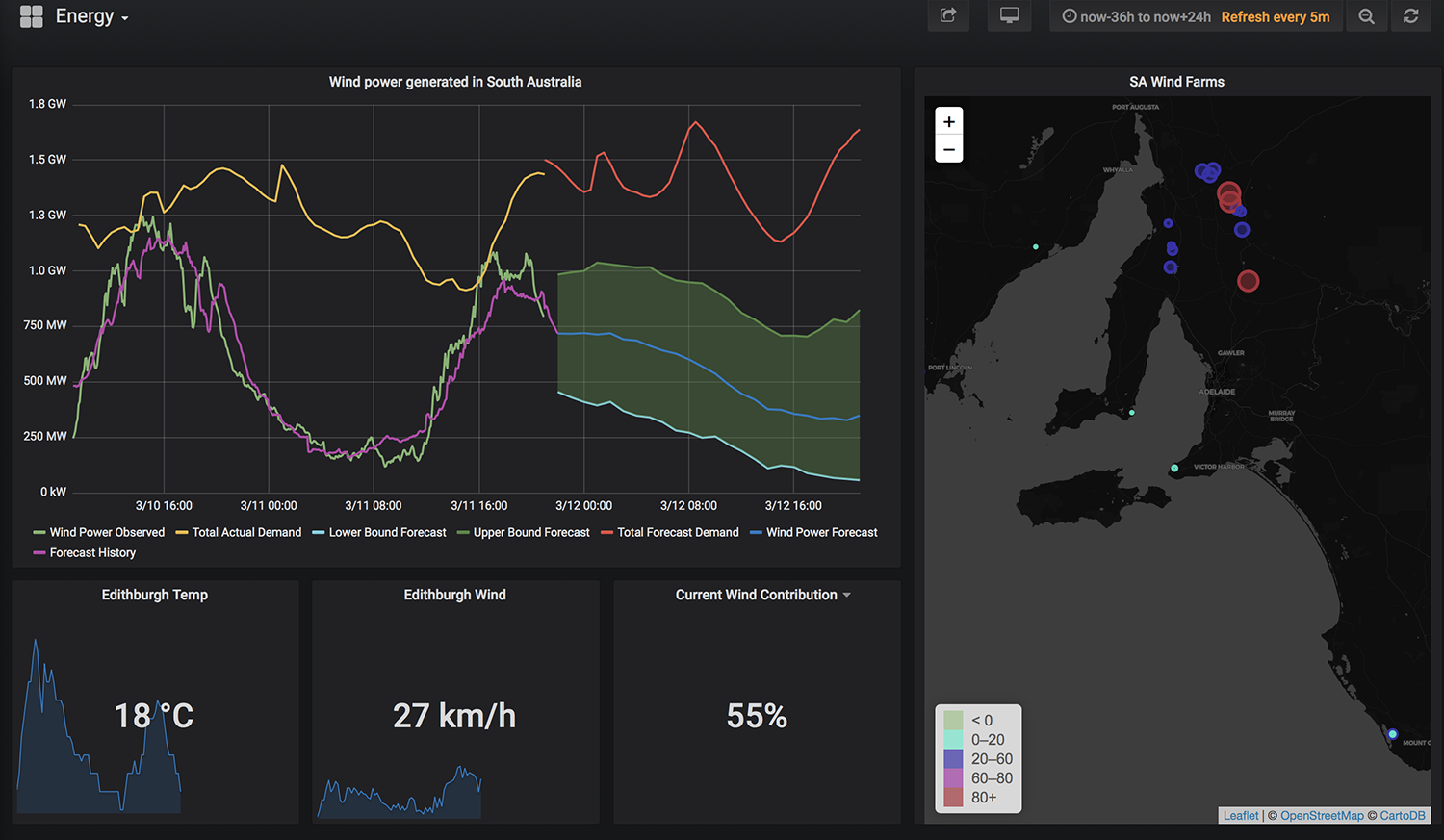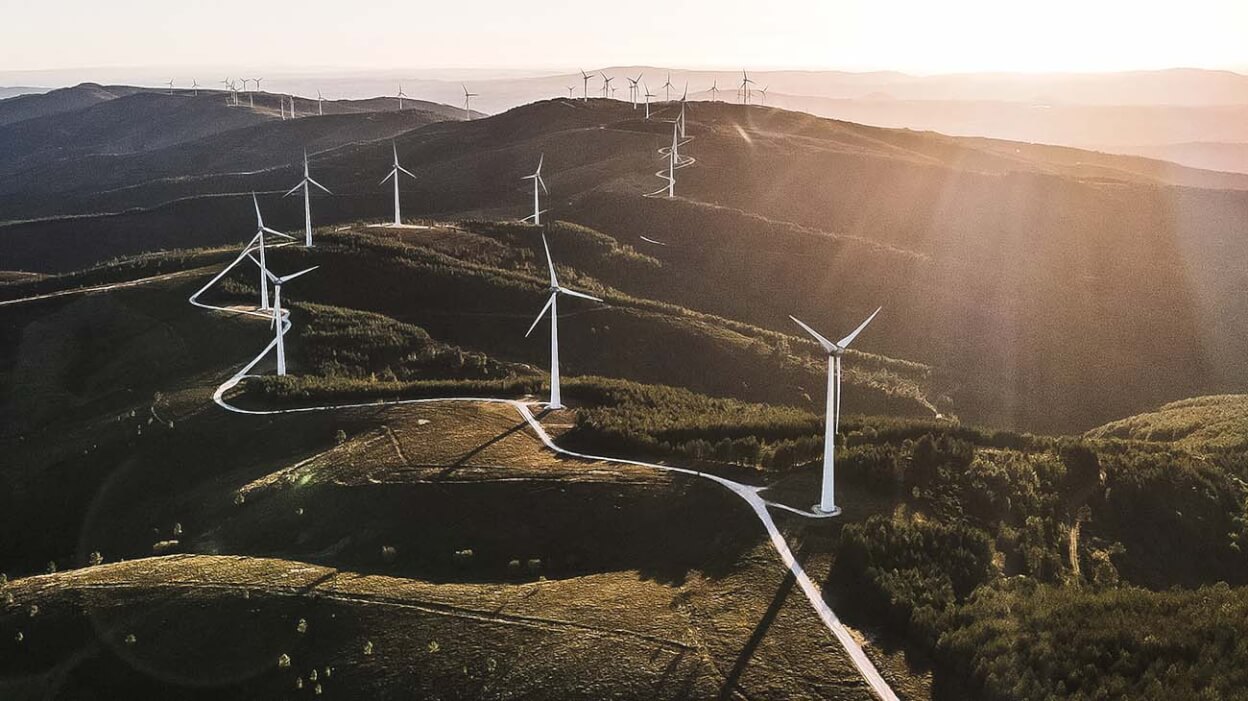INDUSTRY
Energy
SERVICES WE PROVIDED
Data Strategy
Data Learning
Business Challenges
In a market that relies on variable energy sources such as wind it is vital to predict future energy production and how this will satisfy demand.
The National Energy Market (NEM) is a wholesale energy market for generators and retailers to trade electricity and is managed by the Australian Energy Market Operator (AEMO) and is one of the largest interconnected electricity systems in the world. The NEM includes the South Australia region, which makes heavy use of renewable energy such as wind and solar.
The NEM includes the South Australian region which makes particularly heavy use of wind, solar and gas. In a market that relies heavily on these types of resources it is especially important to be able to predict future energy production and how that will service the predicted demand. Knowing this can inform planning around supporting sources of electricity such as gas or imports from other states. AEMO makes use of the Australian Wind Energy Forecasting System (AWEFS) to enable such planning, however the existing AWEFS model is not entirely transparent and works on detailed wind farm information not available to the public.
It is important for the NEM to be able to forecast future wind energy production in order to plan for predicted demand. The current industry standard for wind generation forecasts is not entirely transparent and relies on wind farm information that’s not publicly available. We looked at how existing models could be improved using deep learning.
Standard and consistent workflow of data science practice and the cohesion between model development and deployment were desired to accelerate the development of data science work and realise their benefits in production.
At Mantel Group we are always interested in how Deep Learning might be applied to various industries. The NEM provides this opportunity through energy datasets being publicly available, both historically and in real-time (every 5 minutes). We have been exploring the effectiveness of training a model using Deep Learning (using the available energy and weather data) to be able to predict the available wind energy across SA for a 24 hour period.
Success Criteria
- Evaluate the feasibility of deep learning for predicting renewable energy output.
- Develop a real-time interactive dashboard that visualizes predicted wind energy output, actual wind energy output, and total grid demand
- Baseline deep learning solution against the Australian Wind Energy Forecasting System (AWEFS)
- A unified platform.
Solution
- Sourced historical wind generation data from AEMO/NEM, and historical weather data from the BOM.
- Established the time horizon for prediction (24 hours ahead & 1 hour increments) and establish the upper and lower bounds of prediction confidence.
- Leveraged Google Cloud’s AI Platform, and GPU accelerated compute, we iterated a range of model architectures and features using automated hyper-parameter tuning.
- Using Google Cloud Functions we download real-time data and make a new set of predictions every 5 minutes and make them available via the interactive dashboard.
Having trained several hundred variations of models on historical energy and weather data we have published our current model as part of a South Australia Wind Energy Dashboard. This dashboard is designed to give the user a sense of the contribution wind energy is making to the grid, as well as the predicted wind energy in the next 24 hours. The dashboard is updated with real-time data and the timeline control in the top right can be used to explore historical data.

South Australia Wind Energy Dashboard
Outcomes
- We evaluated performance of the model by assessing the actual wind energy output against our predicted upper and lower bounds.
- Highest accuracy achieved was 80% for predictions 1 hour out.
- The prediction tool was provided to AEMO in order to baseline performance against their existing wind energy forecasting system.
The dashboard graph shows:
- wind energy model prediction history (purple)
- historical wind energy generated (green)
- historical operational energy demand (yellow)
- predicted operational energy demand (orange)
- predicted wind energy generated (blue midpoint with green bounds)
The additional tiles in the dashboard provide further context to the wind energy status in SA through:
- wind and temperature (for a single weather station near Wattle Point Wind Farm)
- a map of the current wind output of wind farms across SA
- current contribution of wind energy to the grid
We will be monitoring the model’s ability to predict wind energy and potentially exploring alternative model architectures over the coming months.
For those who are interested in the technical white paper, please contact us.
Special thanks to the OpenNEM project which has been a huge source of inspiration for this project.
